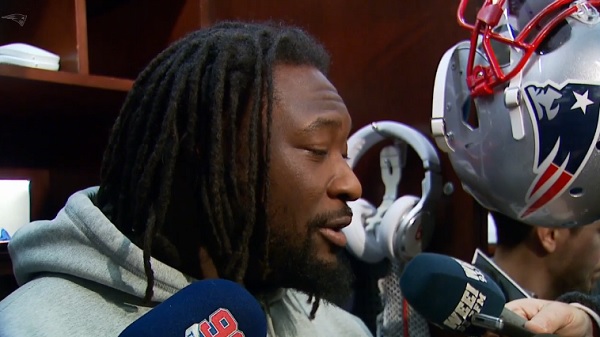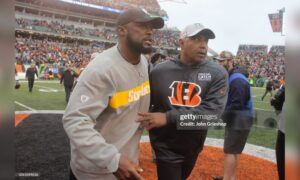Following Le’Veon Bell’s rookie season, the Pittsburgh Steelers determined that their hodgepodge of so-so ‘veteran’ running backs behind their prized young workhorse back was insufficient. They sought out a more pedigreed option in the 2014 offseason in terms of on-field performance, and believed that they had found a viable answer when they came to terms on a two-year deal with running back LeGarrette Blount.
But Blount only lasted 11 games with the Steelers before he was unceremoniously dumped in a move that was seemingly in the makings for some time, but had only come to a head after he threw a silent tantrum by walking off the field early in response to his virtually non-existent workload against the Tennessee Titans on a night in which Bell rushed for 200 yards.
His 11-game Steelers career concluded with 65 carries for 266 yards, averaging 4.1 yards per carry, and two touchdowns, to go along with one fumble lost. 118 of those yards came in one performance on 10 carries, however, making for a quite a significant outlier in those statistics.
Blount was promptly scooped up by the New England Patriots. He finished out the five games remaining in the regular season in Foxboro with 60 more carries for 281 yards and three touchdowns, averaging 4.7 yards per carry. He added another 30 carries on Sunday for 148 yards and three touchdowns in the AFC Championship game (of course, he gained one yard on three carries the week before).
In light of his dominant performance in such a large stage against the Indianapolis Colts, which no doubt recalled his similar performance a year ago in the playoffs against the same team, and the fact that the Steelers proved to have no viable alternative with Bell injured in their Wildcard playoff loss, many began to second- and third-guess Pittsburgh’s decision to release Blount.
But those people are missing the broader picture and ignoring the events that led up to Blount’s release. There is, after all, a reason that he has changed teams five times in his five years in the league.
Blount was seen as a negative influence on Bell, with whom he was caught in possession of marijuana while operating a vehicle during the preseason. That incident will likely cost Bell a game or two in 2015.
Once it became obvious to Blount that he would not be the 1A, but rather the 2B in the backfield behind Bell, he became dissatisfied with his role, which came to a head that night in Tennessee, to the point where coaches and teammates had to coax him back into the locker room rather than leaving early before head coach Mike Tomlin addressed the team.
You have to wonder why, after the news of his release was made public, even some of the players in the locker room who were regarded as his friend more or less implied that it was a move that had to happen. And it was a move that had to happen, regardless of what position it put the Steelers in on the field down the line. There is no luxury of hindsight here. Blount had to go, no matter how many times he knocks the Colts out of the playoffs.








